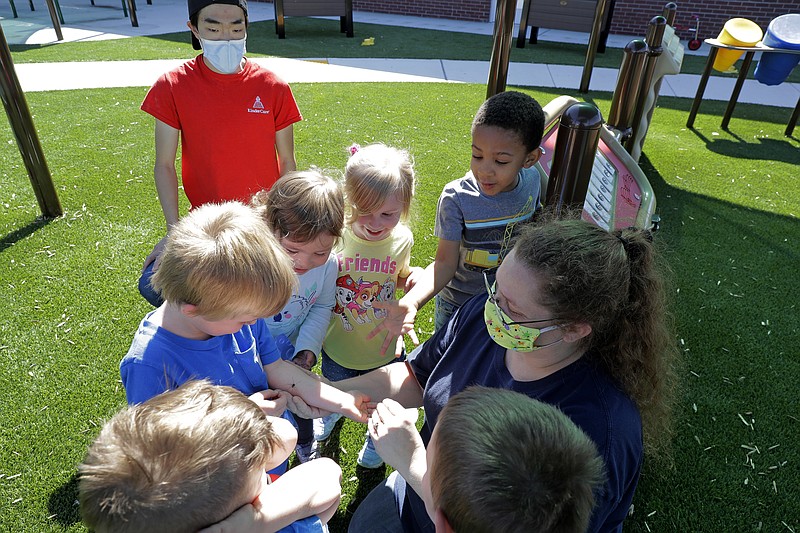State child care funding announced last month will address the long-term needs Missourians have had, advocates for children say.
Casey Hanson, director of outreach and engagement for Kids Win Missouri, said the Missouri Department of Social Services Children's Division rectified a number of backlogs in state (welfare and child care) services using federal emergency funding during the pandemic.
The state used Coronavirus Aid, Relief and Economic Security Act and other funds to fill needs as pressed-upon parents worked from home, lost jobs or had to find help with child care while children were out of school because of the pandemic. And, she said, it continues to find creative ways to support working parents and child care facilities.
"(The Children's Division) wanted to take a serious look at, 'What are the needs now? What can they start to set up for the long term?'" Hanson said. "The recent spending gives programs more immediate relief."
For example, she said, previous to the recent announcements, child care programs could be paid for only five absences for children whose families' incomes qualify them for federal subsidies.
That was disastrous, Hanson said. Because of quarantine procedures, many of the children had absences of 10-14 days at a time.
So state administrators changed policies and are now paying providers for more absences when they are COVID-19-related, she said.
That is among a variety of different opportunities the CARES Act has provided for child care providers and families, said Jeriane Jaegers-Brenneke, DSS' interim early childhood administrator.
"There are several pieces and parts," Jaegers-Brenneke said. "They're all important. There's a reason that each has a different level of importance."
The state used input from child care providers to help it settle on programs that best benefit residents, she said.
Of $46 million in funding announced Dec. 30, $12 million is available to fund 20 percent rate differential payments from January through May for certain Child Care Subsidy Program providers.
"It's closer to what they would be receiving if they were serving a family paying out of pocket," Hanson said. "This gets them up closer to that market rate - so they can serve those kiddos."
Typically, parents have to have a job or be in school, or have foster and adoptive children to qualify for subsidies, she continued. When the pandemic broke out, the state allowed parents to benefit from the subsidies while looking for a job.
The funds help offset income lost because of the pandemic.
"This is a big deal for families that maybe could only get child care if they were at the lowest income level," Jaegers-Brenneke said. "People come in and out of the job search market a lot."
She also said children move in and out of child care often.
Coincidentally, child care availability is strongly tied to parents' job searches or job training.
"If people don't have child care, they can't engage in work and training," she said. "One of the other things we spent quite a bit of time on is employment training programs - giving people an opportunity to get child care and be able to advance themselves."
The funding included $12.8 million for Transitional Child Care Subsidy benefits through December for parents - whether working, in school or training for work - who have incomes up to 215 percent of the federal poverty level. That is an increase from the threshold of 138 percent.
The federal poverty level for 2021 (based on income in 2020) is to be $12,880 for a single person, according to the U.S. Health and Human Services website. For a family of two, it is $17,420. It increases by $4,540 for each additional person in the household, so the poverty level for a family of six is $35,580.
And 215 percent of the federal poverty level for a single-person household is $27,692: two-person, $37,453; three-person, $47,214; and six-person, $76,497.
People earning a little more than the federal poverty level may not be able to afford child care, Hanson said. They certainly couldn't afford it full time. And with children out of school because of the pandemic, that's what they faced.
Meanwhile, child care providers have had fewer children to care for, either because they were sick, they were being cared for by parents, or their own staffs were dealing with quarantines and illnesses.
The new funds include $2.5 million available for grants for child care providers. The providers may ask for up to $25,000 to support virtual learning in their facilities (for school-age children).
School-age children need places to stay while parents are at work, Hanson said.
The administration has taken a well-rounded approach to try to pay for full-time child care, she continued.
"They've been serious about addressing the longer-term concerns that people have," she said.

